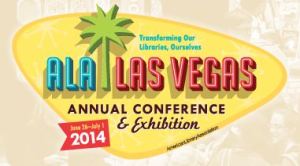Spring conference season is upon us. If you’re making the rounds, check out these events of interest to visual literacy scholars and practitioners at VRA, ARLIS, and ACRL:
Visual Resources Association Annual Conference, Denver, March 11-15, 2015:
Visual Literacy (Part 1)
Following the popular Visual Literacy Case Studies session that premiered at the 2012 annual conference and continued in 2013, this session follows that same purpose while expanding the definition of “visual literacy”. As background, a term first coined in 1969, visual literacy “is a set of abilities that enables an individual to effectively find, interpret, evaluate, use, and create images and visual media. Visual literacy skills equip a learner to understand and analyze the contextual, cultural, ethical, aesthetic, intellectual, and technical components involved in the production and use of visual materials. A visually literate individual is both a critical consumer of visual media and a competent contributor to a body of shared knowledge and culture” (Association of College and Research Libraries, “Visual Literacy Competency Standards for Higher Education). This year’s projects include re-imagining one of the nation’s largest postcard collections through creative instruction design, an exhibition of faith-based photography that poses difficult challenges to viewer interpretation, and two projects in the UK to encourage first-year art student research in areas outside their usual subject areas and an effort to have diverse faculty introduce images into their teaching, practice, and research.
Visual Literacy (Part 2) & Visualization
Methodological approaches to teaching and applying visual literacy have evolved exponentially in recent years, with discussions around image interpretation rapidly expanding to address new and more diverse challenges, audiences, and technological innovations. The implementation of measurement tools and standards is, at best, a moving target, requiring inventive and fluid strategies. Visual literacy teaching and use practices bridge new disciplines, from Anthropology and Sociology to Physics and Biology. This rapidly changing landscape has further invigorated the dialog and generated exciting advances.
This session aims to shed light on both hurdles and innovations to visual literacy. There will be three approaches to visual literacy as it appears in very different environments, but each presentation seeks to establish meaningful ways to analyze varied components of visual materials based on specific audiences. The director of the Visual Arts Data Service at the University for the Creative Arts will present research on data management practice as applied to the visual arts. A researcher and archivist will explain how a visual information retrieval system could be implemented in archives, and how it differs from text-based searching. A collaborative team from Lewis & Clark, a small liberal arts college, will discuss case studies from a number of visual literacy workshops designed for different disciplines and levels.
Art Libraries Association of North America Annual Conference, Fort Worth, March 19-23, 2015:
President’s Choice: A Code of Best Practices in Fair Use for the Visual Arts: How it will Help the Visual Arts Community
The President’s Choice session will present the Code of Best Practices published by the College Art Association in February 2015. This publication presents a clear set of guidelines about the responsible use of copyrighted materials by identifying instances in which the doctrine of fair use may be applied. The ARLIS/NA President and the Public Policy Committee Chair will welcome distinguished guests: Peter Jaszi, the principal author of the Code and a leading authority on copyright and fair use along withAnne Collins Goodyear and Maxwell L. Anderson, two other leading proponents of fair use in the museum community. A Q&A will follow the presentations.
Association of College and Research Libraries National Conference, Portland, March 25-28, 2015:
Visual LIteracy Synthesized: A Content Analysis of Syllabi to Build a Better Visual Literacy Course
This paper and presentation will propose a master syllabus template for visual literacy courses for the purpose of sharing best practices with fellow librarians and educators to use in their own curriculum development. It will include recommended readings, activities, assignments, software, rubrics, and other relevant materials. Current pedagogical practices in the field of visual literacy will be discussed, and audience feedback and discussion will be welcomed.
When the Question Means More than the Answer: Facilitating Inquiry to Improve Research
At the heart of every good research project is a question worth answering. In this session, we will discuss three frameworks librarians can employ to help students cultivate meaningful research questions: PICO, a strategy used in evidence-based practice; guided inquiry, used to identify prior knowledge and gaps in understanding; and concept mapping, used to help students visually identify connections between ideas. Attendees will leave with practical ideas they can incorporate into their own classrooms.
Looks Matter: The Impact of Inclusive and Visual Design on Usability, Accessibility, and Online Learning
We know that inclusive design helps users traditionally defined as disabled, but we often overlook how it enhances learning for all users. In order to highlight the importance of visual and inclusive design in online pedagogy, we will discuss our experience drawing on principles of inclusive design to create a digital learning tool. This presentation will highlight elements of inclusive and visual design crucial to increasing both accessibility and learning in online instructional materials.





